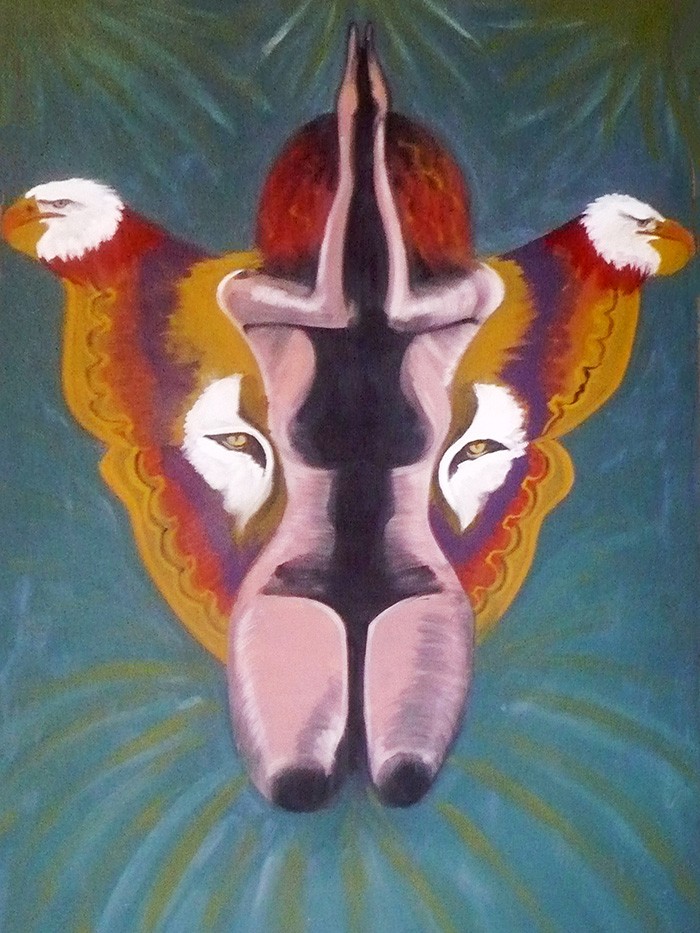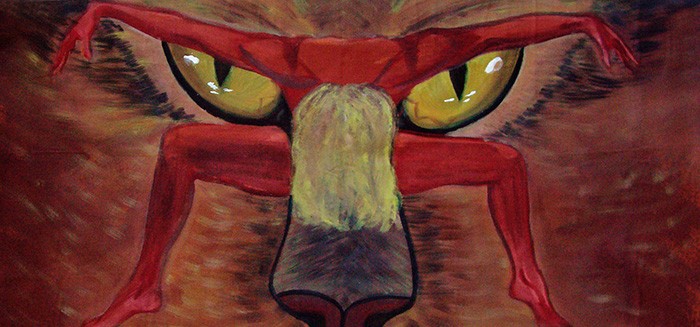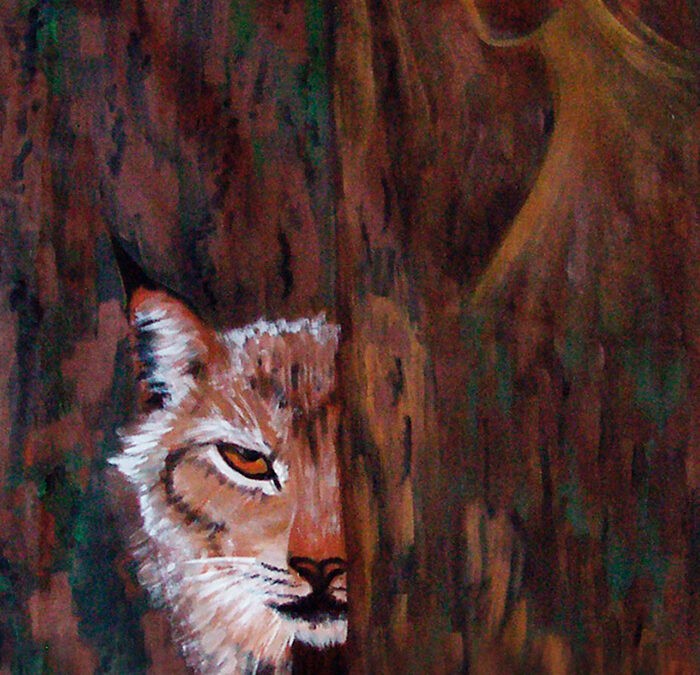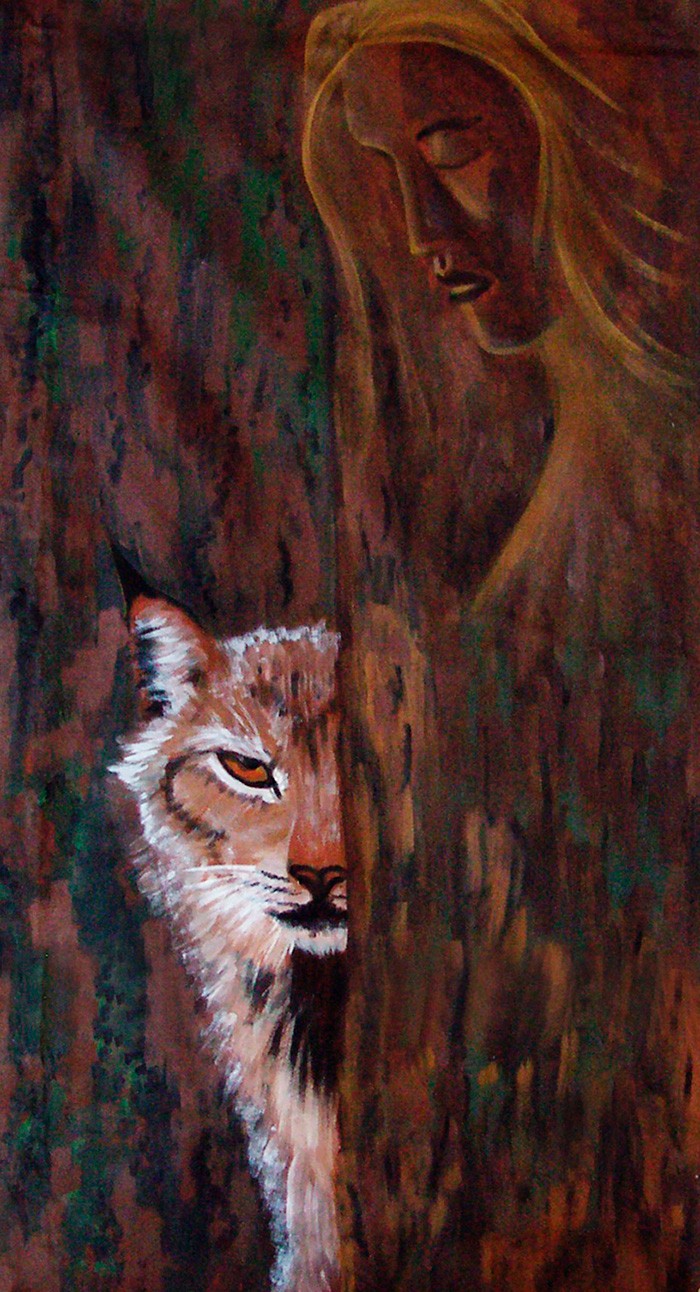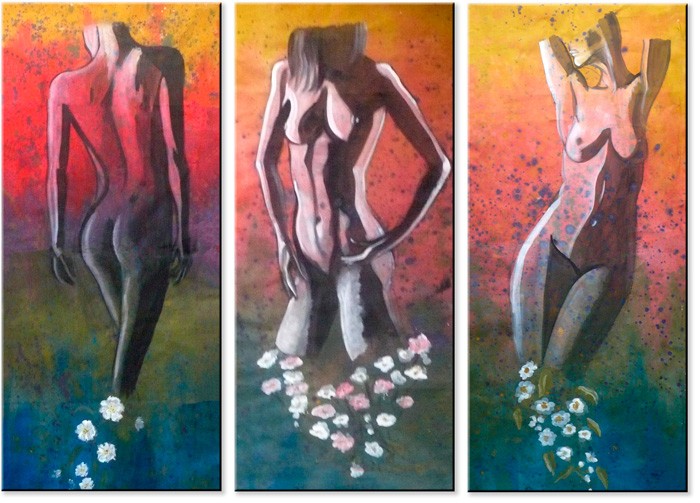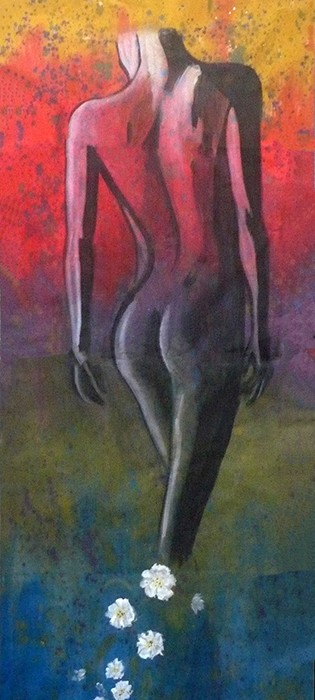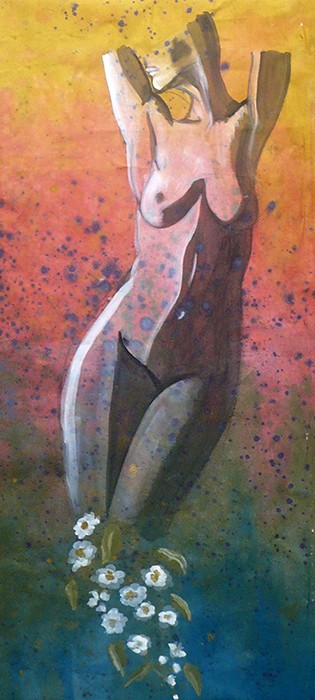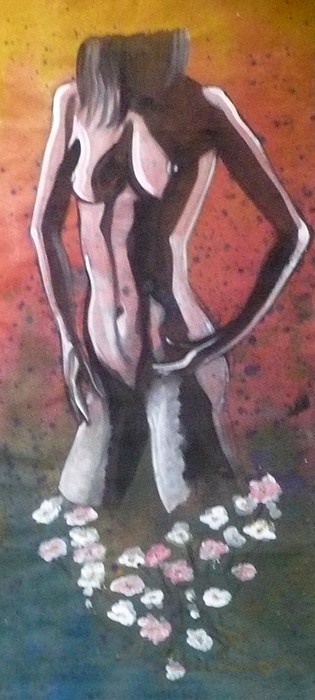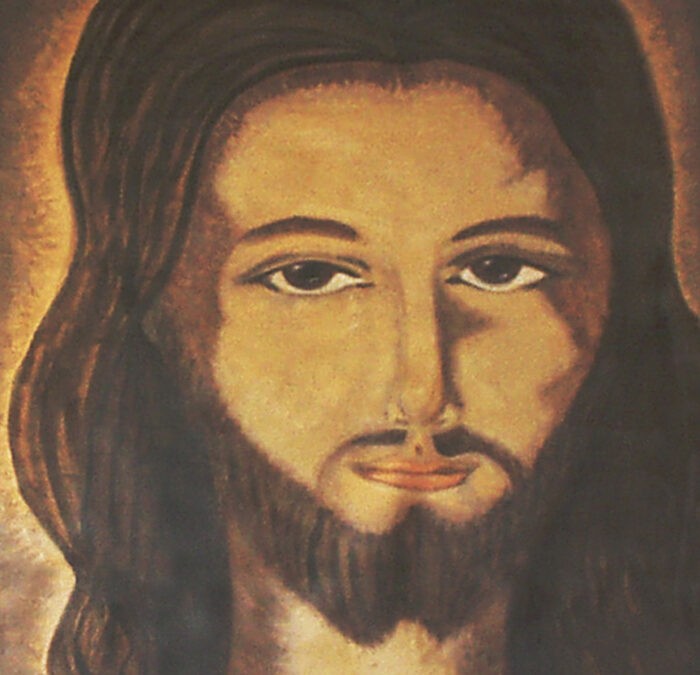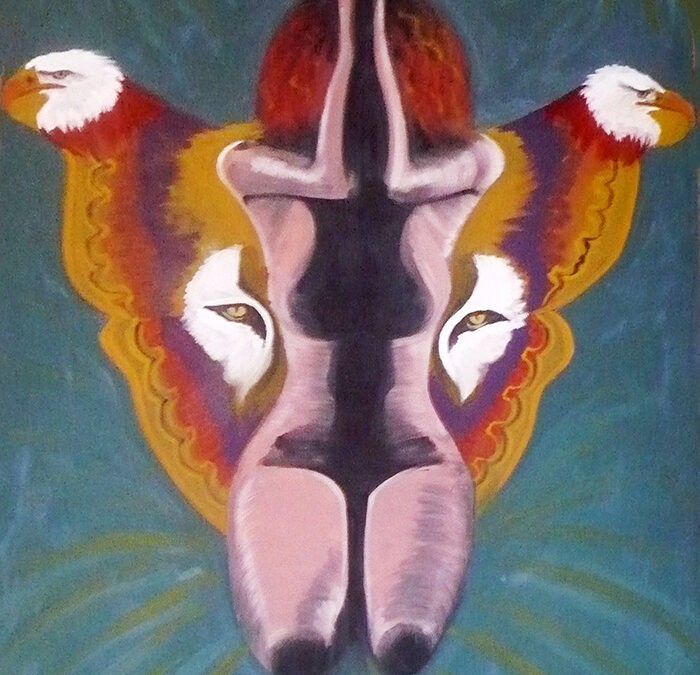
Butterfly Woman
Butterfly Woman
Serie: Large Format Artworks
Technique: Latex on canvas
Size: 110 x 185 cm
Year: 2007
"Butterfly Woman" is a painting that overlaps several images that emerged from nature and that suggest different characters and moods.
The central image of the kneeling naked woman, anonymous, does not show her face, but covers it with her hands raised in a prayerful position. Her posture is one of prayer, of fragility, of total vulnerability.
On the other hand, the butterfly wings, a fanciful version of the type known as "Atlas", wings that suggest the delicacy, the subtle and the ethereal.
These wings, however, contain other animal traits: at their ends, individual profiles of Bald Eagles, the quintessential personification of the indomitable and warrior spirit; and in the center two eyes of a puma, a great American feline, a solitary animal, a symbol of strength and stealth, whose grace and power have been widely admired in the cultures of the indigenous peoples of the Americas.
Finally, the figure is in an area of vegetation, standing on some leaves of luminous greenery, which accentuate the idea of the jungle, the wild and the intense.
Its composition alludes to the representation of the fragility of nature, which is at the mercy of a selfish and superfluous humanity, which does not pay attention to the consequences of its acts of destruction and annihilation of the air, soils, waters, flora and fauna. world fauna.
It is a plea, a call for reflection on the need to take care of our world and the beings that inhabit it, who accompany and help man, with his beauty and his irreplaceable presence in ecosystems around the world.
NOT AVAILABLE FOR SALE
< Back to PORTFOLIO

